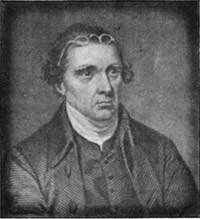
 | ||||||||||
| Intro | Author | Subject | Volume | Volume/Title | NPS | |||||
|
Volume IV - No. 3 |
March, 1940 |
|
Patrick Henry National Monument

Public interest in Red Hill, the Virginia estate on which Patrick Henry lived during his last years and where his body has rested since his death in 1799, has been revived in recent weeks as a result of the approval on January 29 of an Act of Congress authorizing the Secretary of the Interior to acquire the historic lands. The act appropriated $100,000, or such portion as may be required, for acquisition purposes. When established officially the area will become Patrick Henry National Monument, administered by the National Park Service as a perpetual memorial to the man and the valuable services that he contributed in winning American independence. In 1794, when 58 years old and possessed of a sufficient fortune for the needs of his large family, Patrick Henry decided to withdraw from public life. The next year he left the Long Island estate in Campbell County, Virginia, and moved to the Red Hill property in Charlotte County. Red Hill consisted of 2,920 acres, together with a house, one story and a half high, and certain adjoining buildings. The residence was situated on a ridge which divided Campbell and Charlotte Counties and was within a few hundred yards of the point where Falling River joins the Staunton. From the elevation of the house the valley of the Staunton is in full view to the south for three miles or more, presenting a scene of great beauty. From the ridge west of the house may be seen the Blue Ridge Mountains stretching along the horizon; and when the visibility is good the Peaks of Otter, 60 miles distant, come into view. Henry added a frame lean-to to the Red Hill residence, not for the additional room afforded, but, it is said, because he wanted to hear the patter of the rain on its roof. After his death June 6, 1799, the estate passed by will to two of his sons, John Henry, the eldest, receiving the house and half of the land. While John lived few changes were made in the old home, the principal one being the alteration in about 1833 which made it into a two-story structure. It was at about the same time that the boxwood gardens were planted under direction of his wife. The hedges now rank among the best in Virginia and have attained a height of eight to ten feet. When John Henry died in 1858 the property went to his son, William Wirt Henry, a lawyer of note whose practice kept him in Richmond, and for many years Red Hill was left in the care of an overseer. William Wirt Henry was the father of the present owner, Mrs. Lucy Gray Henry Harrison, the great-granddaughter of Patrick Henry, who came into possession of the estate in 1906. She repurchased a great portion of the original lands and remodeled the house into a mansion of 18 rooms. At the same time she had the old office in the library wing where Patrick Henry died moved about 20 feet from its original site. The mansion burned in 1919 but the law office fortunately escaped destruction. An original kitchen, situated to the rear and northwest of the old house site, was burned in 1928. Red Hill consists today of an extensive tract of land, the original law office and study used by Henry during his last years, the beautiful boxwood gardens and hedges which were planted many years after his time, and the 50-foot square where two marble slabs mark the burial places of the man and his wife Dorothea. If the estate is acquired in accordance with the provisions of the Act of Congress, the Service undoubtedly will have to engage in extensive research before any plans for development can be undertaken. Red Hill is six miles off State Route 40 and U. S. Highway 501 about 150 miles southeast of Richmond. --- Roy Edgar Appleman. | |
| <<< Previous | > Contents < | Next >>> | ||
|
http://www.cr.nps.gov/history/online_books/regional_review/vol4-3c.htm Date: 04-Jul-2002 | ||||